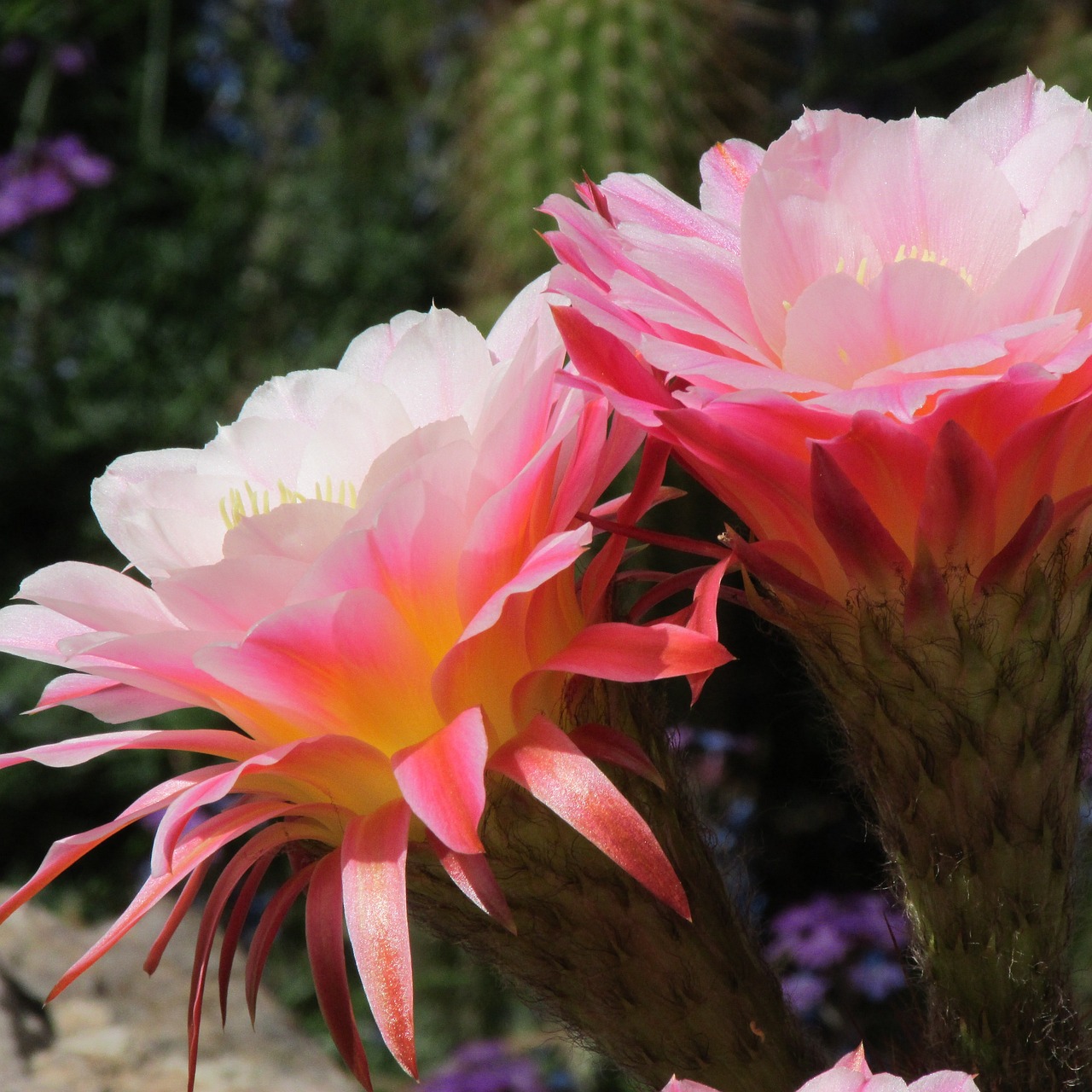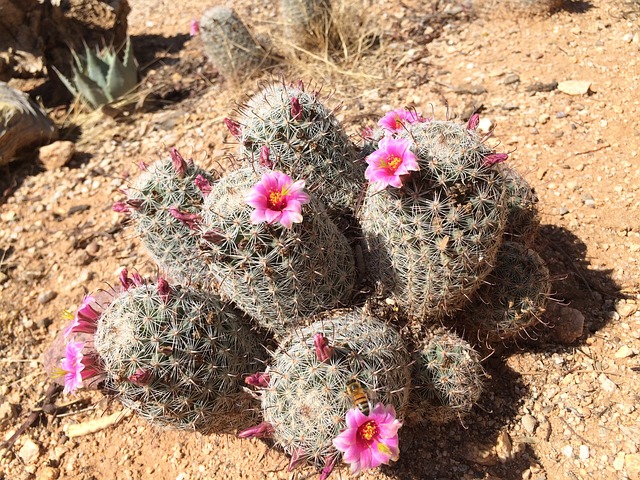Cacti are a natural choice for Tucson’s desert climate, and there are many attractive varieties to choose from with different shapes, sizes, and even colors. Which cacti will do best in your Tucson yard?
What Is a Cactus?
There are more than 1,700 species of cacti, all of which are native to the Americas. These desert-adapted plants are succulents with highly modified leaves – the spines so characteristic of cacti – that protect against herbivores and minimize water loss in very arid climates. These plants typically have a short growing season with long dormancy periods but can burst into bloom very quickly following rare rainfalls.
Because they are low maintenance, extremely drought tolerant, and often native to the region, many cacti are ideal for Tucson landscapes. There is more diversity to these plants than many people realize, however, and once you start looking, you will notice a greater variety of cacti than you may ever have imagined. How do you choose?
Top 10 Cactus Landscaping Choices
With so many types of cacti to choose for your landscape, be sure to visit local nurseries, parks, and nature preserves to see what these plants can look like. The Green Things experts can help you identify any unknown cacti and select the plants that will thrive best in your individual yard. These ten choices are some of the top varieties sure to add desert style and beauty to your landscape.
- Golden Barrel Cactus (Echinocactus grunsonii) – Native to Mexico, these spherical cacti can grow as much as three feet tall and wide. Their bright yellow spines and yellow flowers give them a gleam of gold for year-round landscape color.
- Torch Flowering Cactus (Trichocereus grandifloras hybrid) – These medium sized clumping cacti will have stems 2′ – 4′ tall that clump in a almost sprawling habit. They produce extra large, extravagant blooms in various colors, usually around April.
- Teddy Bear Cholla Cactus (Cylindropuntia bigelovii) – This Sonoran Desert native is one of the more attractive cholla species available. This brown-to-golden cactus has closely packed spines that create a fuzzy appearance and dainty pink flowers to enjoy. It’s also a great habitat plant that provides both food and nesting opportunities for many species of native birds including the Cactus Wren and Curve Billed Thrasher.
- Peruvian Apple Cactus (Cereus peruvianus) – With it’s blue-green stems this cactus makes a striking focal point in a cactus garden. They can get to be 20′ tall with a 15′ spread. Beautiful white flowers open at night in the summer which are followed by delicious edible fruits.
- Organ Pipe Cactus (Stenocereus thurberi) – The tall, upright structure of this cactus makes a bold statement piece, and clusters can be arranged to create a privacy screen or hedge if preferred. As these plants can grow up to 30 feet tall, they are effective for great privacy from all angles.
- Pincushion Cactus (Mammillaria spp) – There are many sizes of pincushion cacti, but they all have a unique flowering habit in common with their spring and summer blooms. Flowers range from lavender to pink and form a crown-like ring around the plant just below the apex. The small red fruits that proceed the blooms are also edible.
- Indian Fig Cactus (Opuntia ficus-indica) – A classic bushy cactus with flat, lobe-shaped, nearly spineless paddles, these cacti feature dramatic orange-yellow flowers that lead to deliciously edible purple fruit. The lobes are also edible, making them practical when they need pruning!
- Old Man Cactus (Oreocereus trollii) – The 3′ foot columns of this upright cactus are great as statement pieces in the landscape or in containers, but it is the thin, whitish wooly “hair” that gives them a distinctive elderly appearance sure to stand out in the landscape.
- Strawberry Hedgehog Cactus (Echinocereus engelmanii) – A smaller clumping cactus growing to 2′ tall by 3′ wide, these prickly friends have slightly curved spines and broad hot pink blooms that make them an unsuspecting showstopper.
- Saguaro Cactus (Carnegiea gigantea) – The iconic “armed” Arizona cactus that produces the official state flower, these very slow-growing behemoths can eventually reach heights of 40-60 feet. Their short bloom season is from early May to early June, leading to red edible fruit.
Tips for Landscaping With Cacti
No matter which type of cactus you choose for your Tucson landscape, these plants generally prefer well-drained, gritty soil. Avoid placing cacti in low spots that may become waterlogged – slopes often have the best natural drainage. They are a great choice for rock gardens and can do very favorably in well-drained containers filled with cacti and succulent potting mix.
When choosing cacti, plan for your long-term landscape vision with the plant’s mature size in mind, and avoid putting these plants close to high-traffic areas where they might become a painful nuisance. Always handle cacti gently while wearing thick, durable gloves to avoid accidental pricks.
In the landscape, consider mulching around cacti with rock or crushed gravel for the most natural appearance and excellent drainage. Placing them together in groups can give a more luxurious appearance but avoid overcrowding that will become jumbled as the plants grow.
To care for cacti, use a specialized cactus-blend fertilizer for their nutritional needs. While these plants don’t need a great deal of water, careful watering will ensure lushness without fostering rot or disease. If you have planted in clusters, a watering wand can be a great way to reach plants without risking painful contact.
Cacti are a great choice for every Tucson landscape, and with so many interesting varieties, you can be sure to have a unique and distinctive yard with your own special mix of cacti to enjoy.




